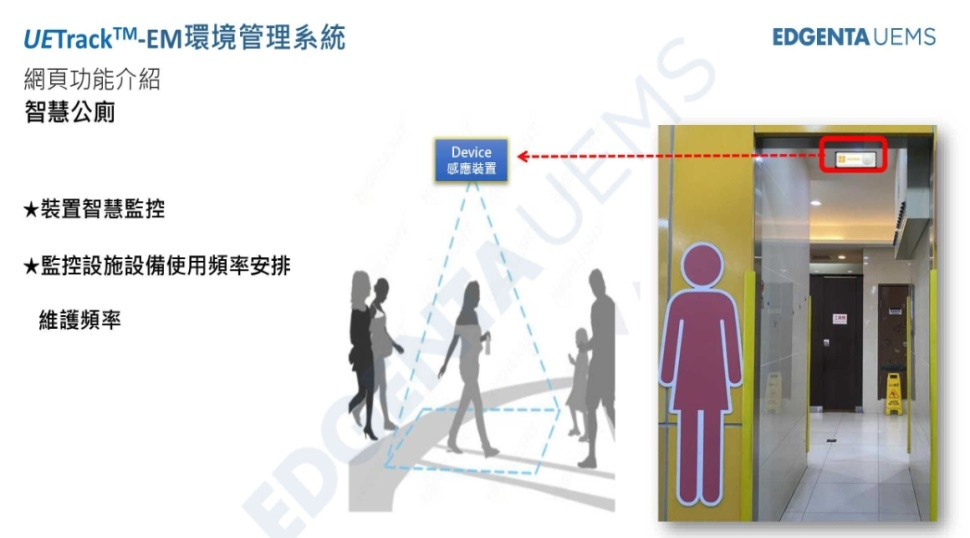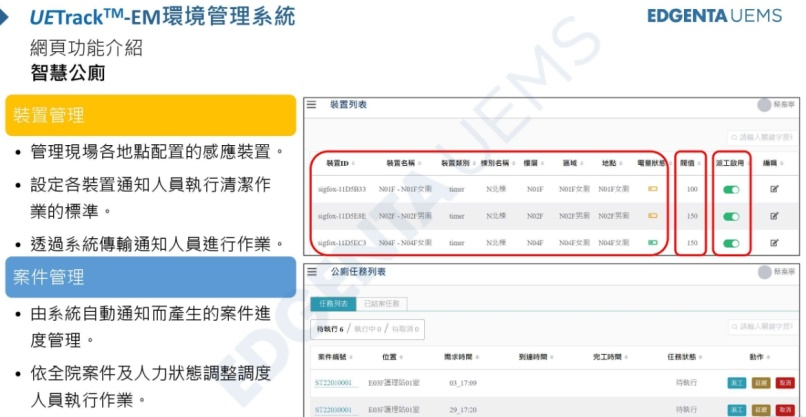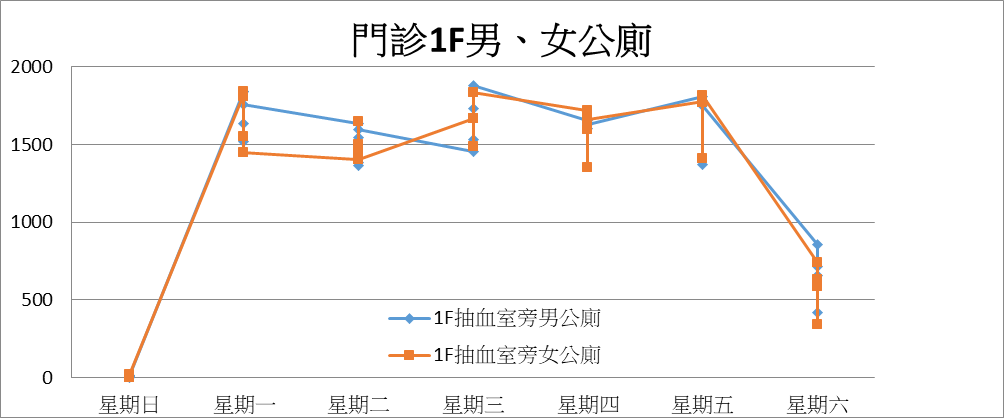The main reason why it is difficult to maintain the cleanliness of public toilets is high human traffic. In the past, experience was used to estimate human traffic at different time periods to arrange cleaning manpower. However, it is difficult to manage a sudden increase in human traffic. Currently, the “cleaning frequency information system (TDIS)” was introduced to improve the work efficiency of cleaners on one hand. On the other hand, technology can be used to solve public toilet problems that are difficult to handle and provide a clean and friendly toilet environment.
In this system, a scanning counter is installed in the entrance/exit. When the counter counts that 100 people have entered the toilet, a short message can be immediately sent to inform the cleaner to inspect and clean the site. The cleaning frequency will differ at off-peak and peak periods to effectively utilize manpower and cleaning times and improve public toilet cleanliness and overall satisfaction.
The male toilet at the outpatient blood drawing counter was used as an example. In August, the total human traffic was 38,618. When classified based on week day and holidays, the human traffic on weekdays was around 1633, the human traffic on Saturday and Sunday was 662 and 10, respectively. Hence human traffic was the highest from Monday to Friday. In response to the aforementioned problem, the human traffic monitoring system will immediately sent an alert so that the management can evaluate the current status of the public toilet through multiple angles at any time and arrange manpower for cleaning. In 2021, satisfaction was 89% and this increased to 93% in 2022. Hence, effectiveness significantly increased.


